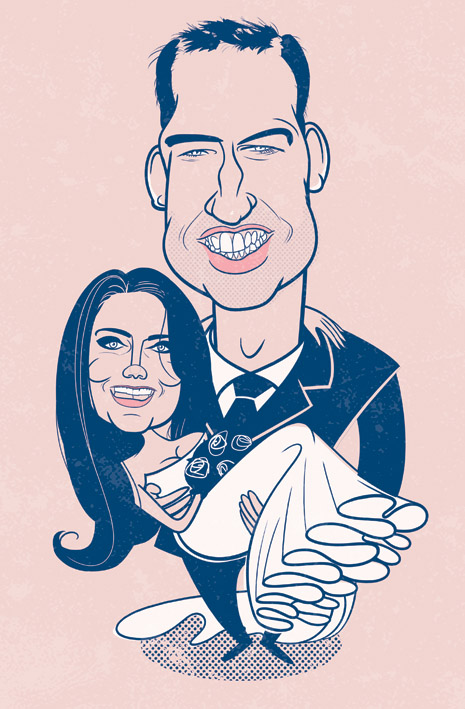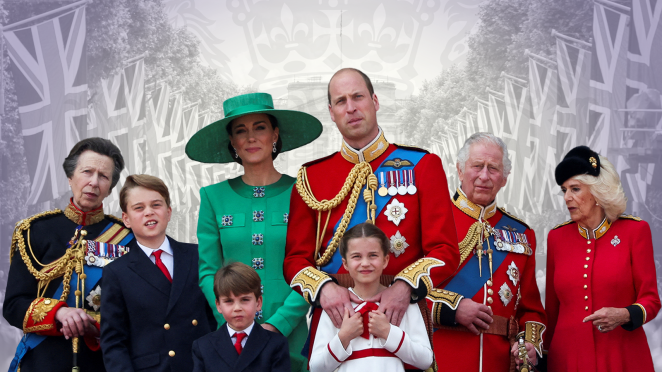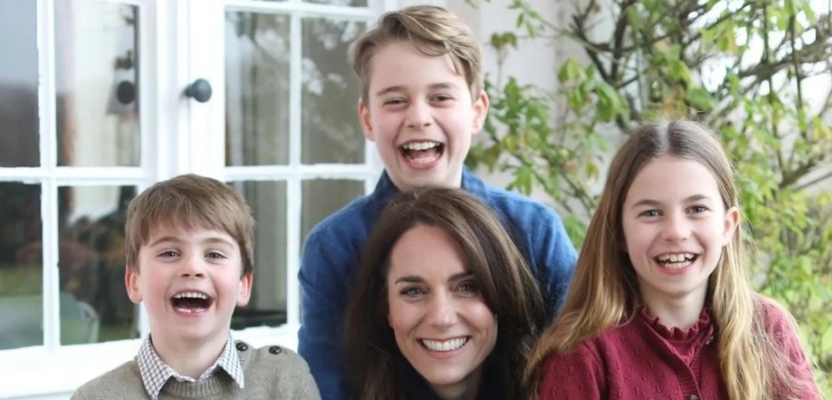Generally speaking, the morning after the Oscars means everyone talking about the Oscars, trading opinions on the gaffes, the big musical numbers and the controversial wins. This year, however, I awoke the morning after not to hordes of messages about Ryan Gosling’s ‘kencredible’ performance but an uncanny picture of Kate Middleton’s family.
In the world of royalty, where every image is meticulously curated, it’s no wonder that the image in question has sent shockwaves through the British monarchy. It’s downright creepy. Taken at surface level, that’s all it is – an embarrassing and obviously doctored photo that’s inspired some truly exceptional memes. But this family portrait has actually raised several important questions about transparency, privacy, and the delicate balance between image and reality.

Pete Ellis
It all seems pretty innocuous at first - a seemingly heartwarming family photo released to celebrate Mother’s Day and mark the Princess of Wales’ return to public life following an abdominal operation. The picture in question (which you’ll all have seen by now) features Kate surrounded by her three children, radiating warmth and joy in an albeit obviously manufactured way (what else would you expect from a Royal).
However, keen-eyed observers noticed discrepancies: a misaligned sweater, a blurred skirt, and a conspicuously absent wedding ring, not to mention those terrifying open-mouthed smiles. The whispers began: What was being concealed? Why the need for photo editing? Once it became clear the image has been digitally altered, news outlets refused to publish it and Kate issued a swift apology. But did she really need to apologise?
The Power of Publicity and The Law of Celebrity
For generations, the British royal family has relied on publicity to validate its own existence. Unlike some European monarchies that embraced modesty and privacy, the British royals have been leaning into their celebrity status for decades now. The Queen, King Charles, and Prince William played their roles impeccably, while Princesses Margaret, Diana, and Harry provided captivating foils. The monarchy’s legitimacy hinges on popularity, and publicity is its currency.
In the age of digital media, privacy is an illusion. The thirst for information—whether sympathetic or scandalous—drives column inches and clicks. The public demands answers, and the media obliges. Kate Middleton’s admission that she edited the photograph only intensified the scrutiny and has catalysed much media discourse around not only the role of the royal family in British culture but the role of digital manipulation in modern media and what “editorial standards” really means in today’s culture.
The Monarchy’s Dilemma and Lessons to be Learned
The monarchy’s handling of media is pivotal. Press officers guard its reputation, but the digital age defies secrecy. The recent photo manipulation debacle underscores this reality as the general public feel they are owed an explanation for every facet of the lives of the royals. The missteps in managing this narrative have left the palace scrambling for damage control. We do pay their ‘salaries’ after all.

Authenticity Matters: In an era of scepticism, authenticity resonates. The public craves genuine moments, unfiltered by Photoshop or spin.
Privacy vs. Public Role: Balancing personal privacy with public duty is a tightrope walk. The royals must decide when to reveal and when to protect.
Digital Vigilance: The digital age amplifies scrutiny. Every pixel matters. The monarchy must adapt or risk lapsing into irrelevance.
The Unseen Cost
If you want to go through the image with a fine toothcomb and figure out which parts have been altered, there are hundreds of outlets online offering some shockingly detailed takedowns of the offending article.
But for me, the how isn’t important, it’s the why and this whole spectacle seems to suggest the only reason Kate felt the need to doctor the image is because the speculation surrounding her health had left her feeling particularly vulnerable. Is the health of the royal family really in the public interest? It’s not in mine but I appreciate some people beholden to the royal "brand" might have felt betrayed by such a brazen manipulation.
Ultimately, the whole saga isn’t just about pixels and pixels—it’s about trust. The price of reality is steep: a tarnished image, a fractured narrative, and a public left wondering what else remains unseen.
As the pixels settle and the public scrutinizes, the royal family faces a stark choice: reveal all or risk losing the trust they’ve cultivated for centuries. In the end, the price of reality may be higher than they ever imagined. It’s not pretty but it’s the way things are, for better or worse.
Another Opinion
Professor Abdul Sadka, expert in imaging and image analytics/processing at Aston University

Although the Princess has admitted manipulation of the photo it still leaves two questions to be answered; how did the news agencies suspect image manipulation to the point that made them decide to retract it, and what part of the photo did undergo the tampering?
From all the discourse I read about it so far though, none of the articles really touch on what the manipulation was all about and where in the photo news agencies think this was done. Is it in the positioning of the hands, for example George’s, or is it in the cropping and application of colours (some news agencies are lenient with this sort of manipulation on their published imagery).
So, perceptually speaking, there is no certainty on what part of the image editing was done and how, but technically speaking the question would be: Is that a deepfake? that is an image that purports the royals to be having this sort of gathering in this sort of setting when they haven’t.
To provide a definitive response to that question you would have to analyse the image at low level (using low level image analytics). However, that still leaves unanswered - what was the basis behind the decision to “kill/retract” the image when they first raised the suspicion of image manipulation?




